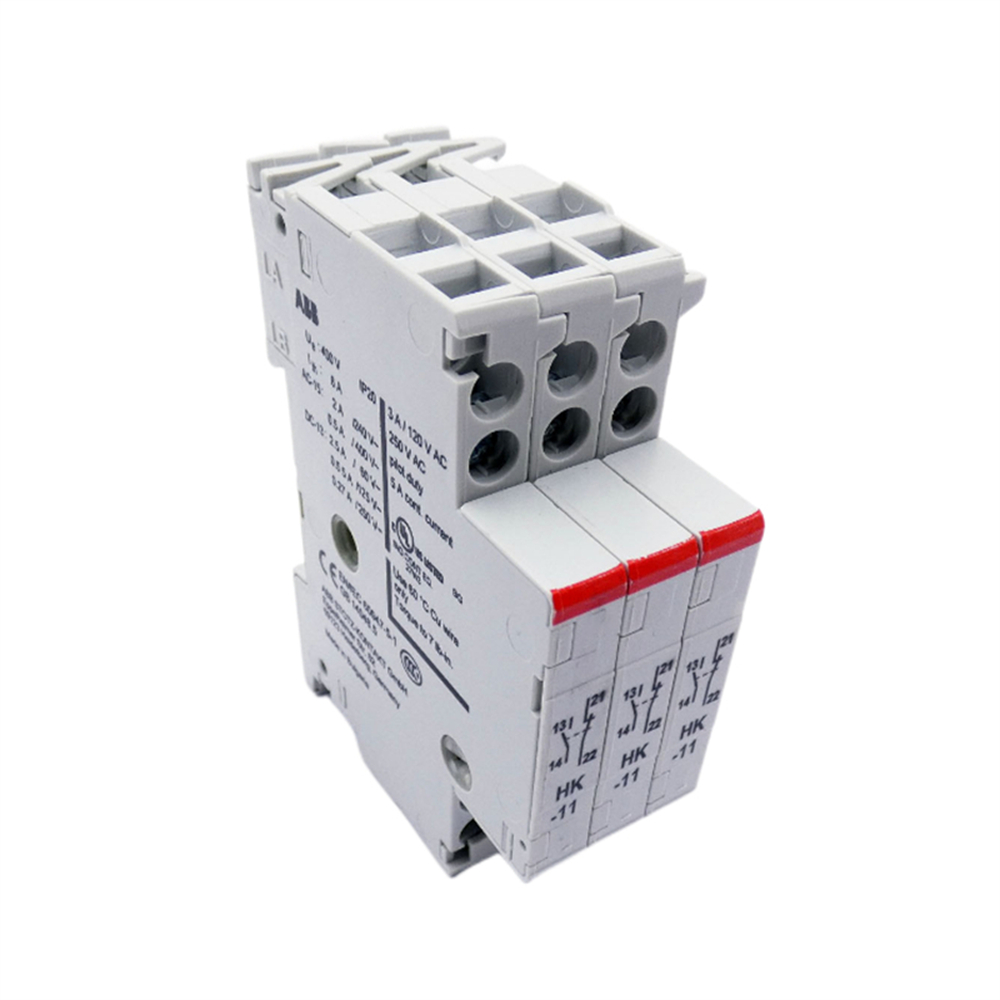ABB HK-11 auxiliary contact
precautions
Correct selection and installation: When selecting, it is necessary to choose the appropriate HK-11 auxiliary contact model based on factors such as the actual type of main circuit equipment used, voltage level, current size, and control logic requirements. During the installation process, strictly follow the product installation manual to ensure that the contacts are firmly installed, the wiring is correct and error free, and to avoid problems such as poor contact and short circuits caused by improper installation.
Suitable working environment: It should be installed in a dry, well ventilated, and suitable temperature environment. The working temperature range is generally -5 ℃ to+40 ℃, and the relative humidity should not exceed 85% (without condensation). Avoid placing it in places with high temperature, humidity, strong electromagnetic interference, or corrosive gases to prevent affecting the electrical performance and service life of the contacts.
Regular maintenance and inspection: Regularly inspect the HK-11 auxiliary contacts to see if there are any signs of wear, erosion, dust accumulation, etc. on the surface of the contacts. If severe contact wear or obvious arc marks are found on the surface, they should be cleaned or replaced in a timely manner. At the same time, check if the connecting cables are loose to ensure the reliability of the electrical connection. In addition, regular functional testing should be conducted on the electrical system where the auxiliary contacts are located to ensure that they can function properly during actual operation.
Similar model supplement
In ABB's auxiliary contact product line, models similar to HK-11 include HK-10. HK-10 auxiliary contacts have certain similarities with HK-11 in basic functions and application scenarios, but there may be differences in specific contact forms, rated parameters, and other aspects. For example, HK-10 may only have a single configuration of normally open or normally closed contacts, which is suitable for some electrical systems with relatively simple control logic requirements; The combination of 1 normally open and 1 normally closed contact of HK-11 is more suitable for constructing complex control logic. When selecting, users need to comprehensively compare the characteristics and advantages of different models based on specific industrial application scenarios, control requirements, and budget factors, and choose the most suitable auxiliary contact products.
Application scenarios
Industrial motor control system: In the control circuits of various industrial motors, HK-11 auxiliary contacts are used to provide feedback on the motor's operating status, such as the motor's start, stop, overload protection actions, and other information. At the same time, it can be used to achieve forward and reverse interlocking control of motors, sequential start and stop control of multiple motors, etc., to ensure the safe and stable operation of industrial motor systems.
Power distribution system: In distribution equipment such as power substations and distribution rooms, auxiliary contacts can be used to indicate the opening and closing status of circuit breakers, isolating switches, and other equipment, providing intuitive equipment operation status information for power operation and maintenance personnel, facilitating timely understanding of the operation status of the power system, troubleshooting, and equipment maintenance.
Automated production line control system: On the automated production line, HK-11 auxiliary contacts work together with various automation equipment such as PLC, sensors, actuators, etc. By changing the contact state, the operating status signal of the equipment is transmitted to control units such as PLC to achieve automated monitoring and control of the production process. For example, on the production line, auxiliary contacts are used to control the start and stop of related equipment based on the conveying status of the product, ensuring the smooth progress of the production process.

- EMERSON
- Honeywell
- CTI
- Rolls-Royce
- General Electric
- Woodward
- Yaskawa
- xYCOM
- Motorola
- Siemens
- Rockwell
- ABB
- B&R
- HIMA
- Construction site
- electricity
- Automobile market
- PLC
- DCS
- Motor drivers
- VSD
- Implications
- cement
- CO2
- CEM
- methane
- Artificial intelligence
- Titanic
- Solar energy
- Hydrogen fuel cell
- Hydrogen and fuel cells
- Hydrogen and oxygen fuel cells
- tyre
- Chemical fiber
- dynamo
- corpuscle
- Bently
- Pulp and paper
- printing
- fossil
- FANUC
- Food and beverage
- Life science
- Sewage treatment
- Personal care
- electricity
- boats
- infrastructure
- Automobile industry
- metallurgy
- Nuclear power generation
- Geothermal power generation
- Water and wastewater
- Infrastructure construction
- Mine hazard
- steel
- papermaking
- Natural gas industry
- Infrastructure construction
- Power and energy
- Rubber and plastic
- Renewable energy
- pharmacy
- mining
- Plastic industry
- Schneider
- Kongsberg
- NI
- Wind energy
- International petroleum
- International new energy network
- gas
- WATLOW
- ProSoft
- SEW
- wind
- ADVANCED
- Reliance
- YOKOGAWA
- TRICONEX
- FOXBORO
- METSO
- MAN
- Advantest
- ADVANCED
- ALSTOM
- Control Wave
- AB


email:1583694102@qq.com
wang@kongjiangauto.com












































































































